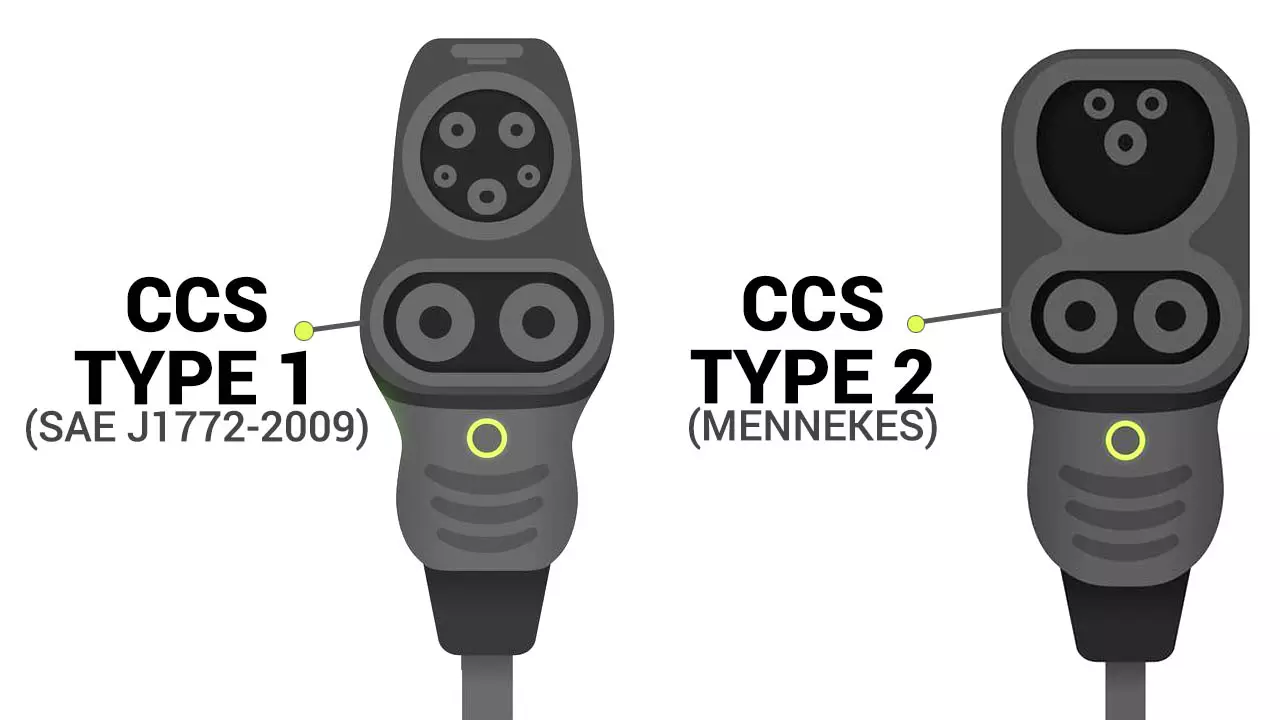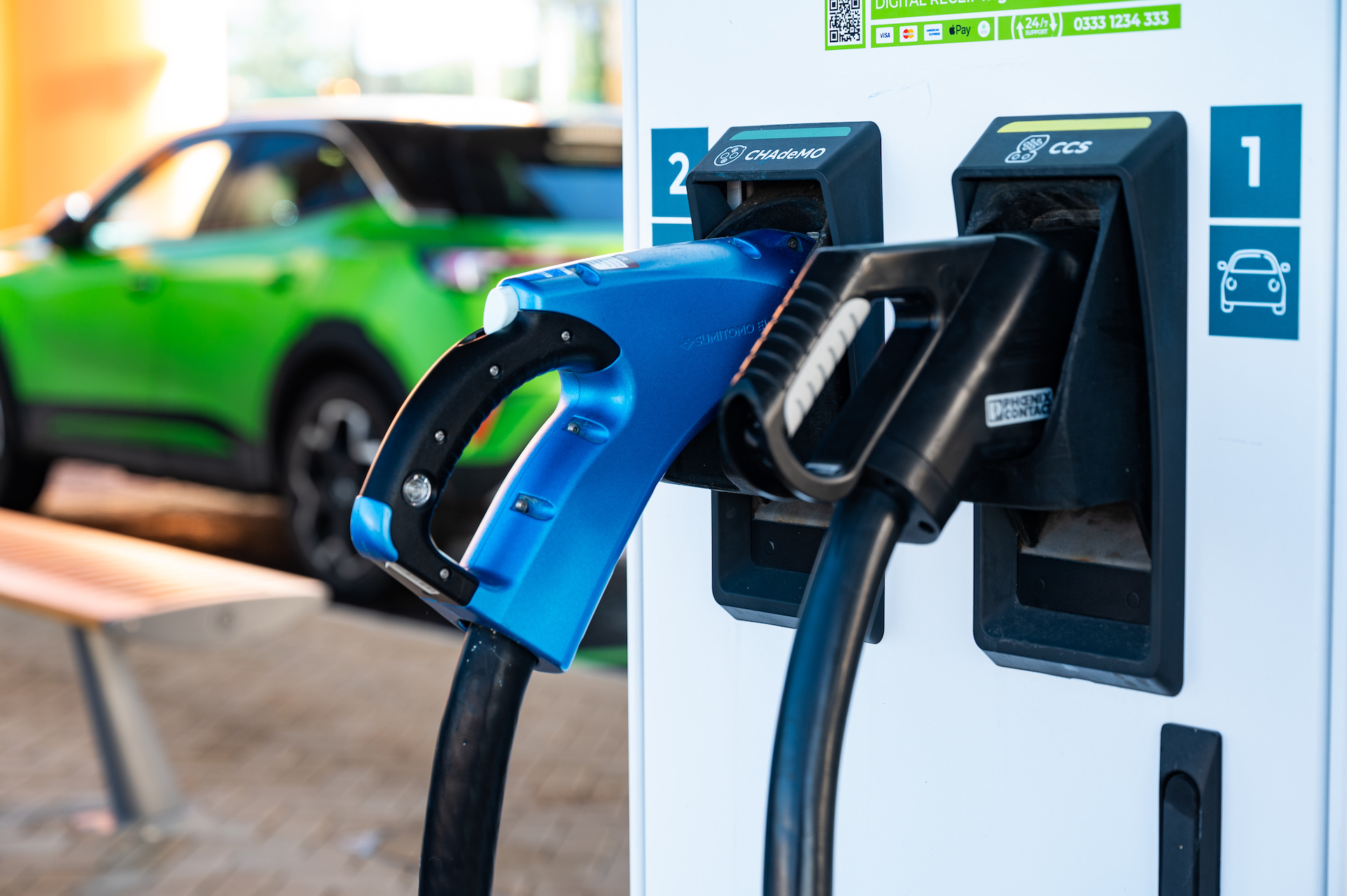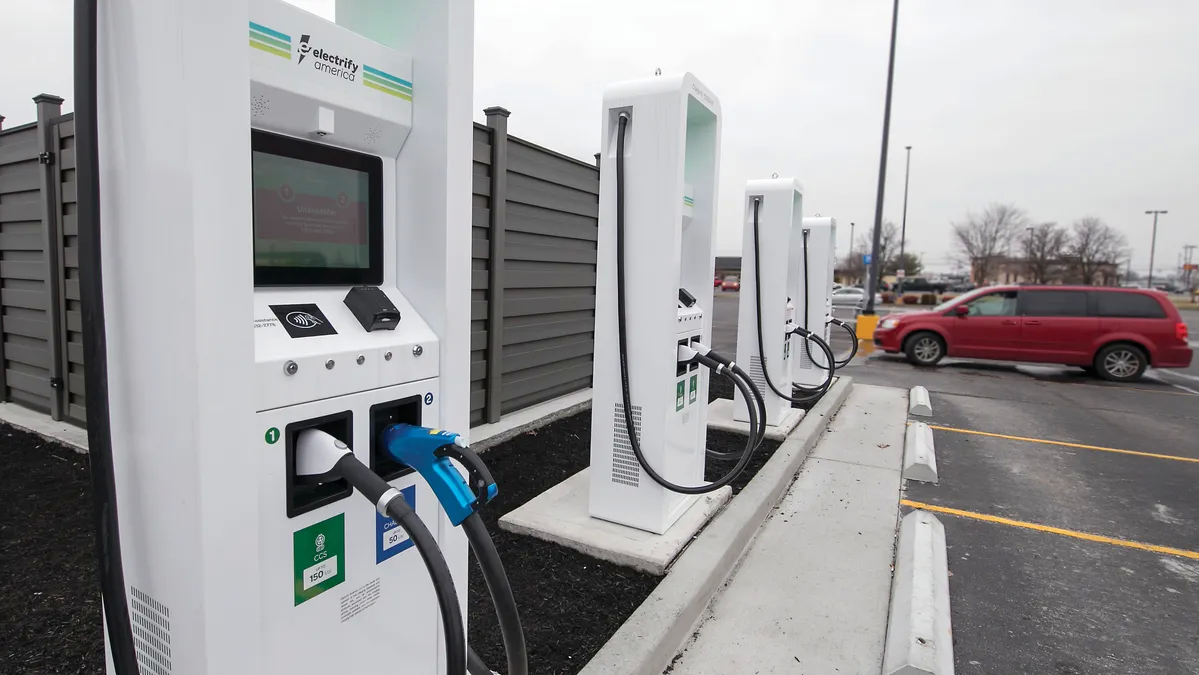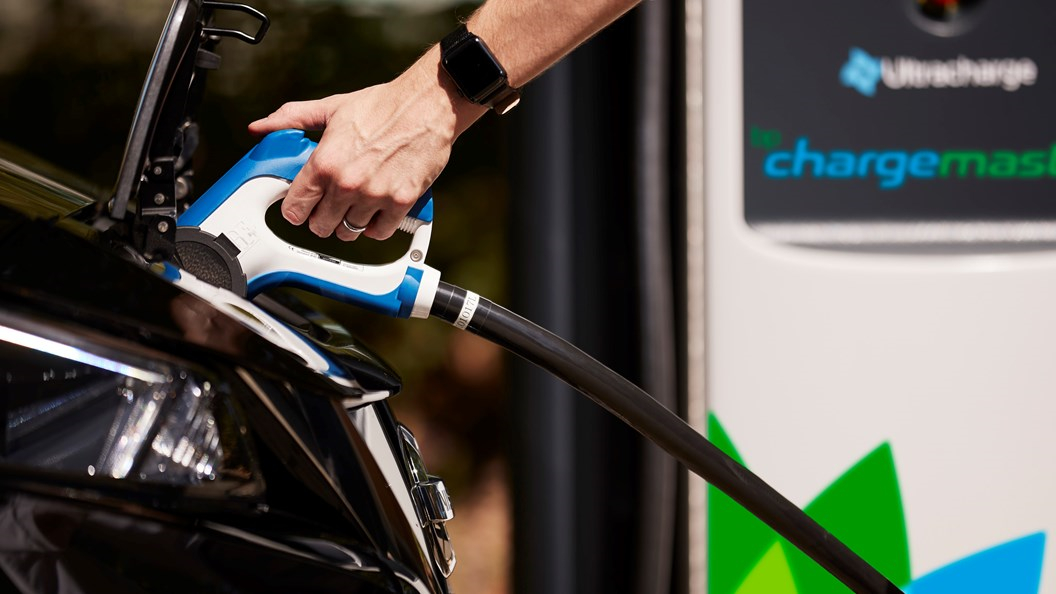CCS1 Plug Vs CCS2 Gun: Difference in EV Charging Connector Standards
If you’re an electric vehicle (EV) owner, you’re likely familiar with the importance of charging standards. One of the most widely used standards is the Combined Charging System (CCS), which offers both AC and DC charging options for EVs. However, there are two versions of CCS: CCS1 and CCS2. Understanding the differences between these two charging standards can help you make informed decisions about your charging options and ensure you have access to the most efficient and convenient charging solutions for your needs.
CCS1 and CCS2 are both designed to provide reliable and efficient charging for EV owners. However, each standard has its unique features, protocols, and compatibility with different types of EVs and charging networks.
In this article, we’ll explore the nuances of CCS1 and CCS2, including their physical connector designs, maximum charging power, and compatibility with charging stations. We’ll also delve into charging speeds and efficiency, cost considerations, and the future of EV charging standards.
By the end of this article, you’ll have a better understanding of CCS1 and CCS2 and be better equipped to make informed decisions about your charging options.
Key Takeaways: CCS1 vs. CCS2
CCS1 and CCS2 are both DC fast charging standards that share the same design for DC pins and communication protocols.
CCS1 is the fast charging plug standard in North America, while CCS2 is the standard in Europe.
CCS2 is becoming the dominant standard in Europe and is compatible with most EVs on the market.
Tesla’s Supercharger network previously used a proprietary plug, but in 2018 they started using CCS2 in Europe and have announced a CCS to Tesla proprietary plug adapter.
Evolution of EV Charging Standards
You may already know about the different EV charging connector standards and charger types, but are you aware of the evolution of these standards, including the ongoing development of CCS1 and CCS2 standards for DC fast charging?
The CCS (Combined Charging System) standard was introduced in 2012 as a way to combine AC and DC charging into a single connector, making it easier for EV drivers to access different charging networks. The first version of CCS, also known as CCS1, was developed for use in North America and uses the SAE J1772 connector for AC charging and additional pins for DC charging.
As EV adoption has increased globally, the CCS standard has evolved to meet the needs of different markets. The latest version, known as CCS2, was introduced in Europe and uses a Type 2 connector for AC charging and additional pins for DC charging.
CCS2 has become the dominant standard in Europe, with many automakers adopting it for their EVs. Tesla has also embraced the standard, adding CCS2 charging ports to their European Model 3s in 2018 and offering an adapter for their proprietary Supercharger plug.
As EV technology continues to evolve, it’s likely we’ll see further developments in charging standards and connector types, but for now, CCS1 and CCS2 remain the most widely used standards for DC fast charging.
What is CCS1?
CCS1 is the standard charging plug used in North America for electric vehicles, featuring a design that includes the DC pins and communication protocols. It is compatible with most EVs on the market, except for Tesla and Nissan Leaf, which use proprietary plugs. The CCS1 plug can deliver between 50 kW and 350 kW of DC power, making it suitable for fast charging.
To better understand the differences between CCS1 and CCS2, let’s take a look at the following table:
| Standard | CCS1 Gun | CCS 2 Gun |
|---|---|---|
| DC power | 50-350 kW | 50-350 kW |
| AC power | 7.4 kW | 22 kW (private), 43 kW (public) |
| Vehicle compatibility | Most EVs except Tesla and Nissan Leaf | Most EVs including newer Tesla |
| Dominant region | North America | Europe |
As you can see, CCS1 and CCS2 share many similarities in terms of DC power, communication, and AC power (although CCS2 can deliver higher AC power for private and public charging). The main difference between the two is the inlet design, with CCS2 combining the AC and DC inlets into one. This makes the CCS2 plug more convenient and easier to use for EV drivers.
The simple difference is that CCS1 is the standard charging plug used in North America, CCS2 is the dominant standard in Europe. However, both plugs are compatible with most EVs on the market and can deliver fast charging speeds. And there re loads of adapters available. The big key is to understand what you need and what charging options you plan to use in your area.
What is CCS2?
The CCS2 charging plug is a newer version of the CCS1 and is the preferred connector for European and American automakers. It features a combined inlet design that makes it more convenient and easier to use for EV drivers. The CCS2 connector combines the inlets for both AC and DC charging, allowing for a smaller charging socket compared to CHAdeMO or GB/T DC sockets plus an AC socket.
CCS1 and CCS2 share the design of the DC pins as well as the communications protocols. Manufacturers can swap the AC plug section for Type 1 in the US and potentially Japan, or Type 2 for other markets. CCS uses Power Line Communication
(PLC) as the communication method with the car, which is the same system used for power grid communications. This makes it easy for the vehicle to communicate with the grid as a smart appliance.
Differences in Physical Connector Design
If you’re looking for a charging plug that combines both AC and DC charging in one convenient inlet design, then the CCS2 connector may be the way to go. The physical design of the CCS2 connector features a smaller charging socket compared to the CHAdeMO or GB/T DC socket, plus an AC socket. This design allows for a more compact and streamlined charging experience.
Here are some key differences in physical connector design between CCS1 and CCS2:
- CCS2 has a larger and more robust communication protocol, which allows for higher power transfer rates and more efficient charging.
- CCS2 has a liquid-cooled design that allows for faster charging without overheating the charging cable.
- CCS2 features a more secure locking mechanism that prevents accidental disconnection during charging.
- CCS2 can accommodate both AC and DC charging in one connector, while CCS1 requires a separate connector for AC charging.
Overall, the physical design of the CCS2 connector offers a more efficient and streamlined charging experience for EV owners. As more automakers adopt the CCS2 standard, it’s likely that this connector will become the dominant standard for EV charging in the future.
Differences in Maximum Charging Power
You can dramatically reduce your EV charging time by understanding the differences in maximum charging power between different types of connectors. The CCS1 and CCS2 connectors are capable of delivering between 50 kW and 350 kW of DC power, which makes them the preferred charging standard for European and American automakers, including Tesla. The maximum charging power of these connectors depends on the vehicle’s battery capacity and the capacity of the charging station.
In contrast, the CHAdeMO connector is capable of delivering up to 200 kW of power, but it’s slowly being phased out in Europe. China is developing a new version of the CHAdeMO connector that could deliver up to 900 kW, and the latest version of the CHAdeMO connector, ChaoJi, enables DC charging with over 500 kW. ChaoJi could rival CCS2 as the dominant standard in the future, especially since India and South Korea have expressed strong interest in the technology.
In summary, understanding the differences in maximum charging power between different types of connectors is essential for efficient EV use. The CCS1 and CCS2 connectors offer the fastest charging speeds, while the CHAdeMO connector is slowly being phased out in favor of newer technologies like ChaoJi. As EV technology continues to evolve, it’s important to stay up-to-date on the latest charging standards and connector technologies to ensure that your vehicle is charged as quickly and efficiently as possible.
Which Charging Standard is Used in North America?
Knowing which charging standard is used in North America can greatly impact your EV charging experience and efficiency. The charging standard used in North America is CCS1, which is the same as the European CCS2 standard but with a different connector type. CCS1 is used by most American automakers, including Ford, GM, and Volkswagen. However, Tesla and Nissan Leaf use their own proprietary charging standards.
CCS1 offers a maximum charging power of up to 350 kW, which is significantly faster than Level 1 and Level 2 charging. With CCS1, you can charge your EV from 0% to 80% in as little as 30 minutes. However, not all charging stations support a maximum charging power of 350 kW, so it’s important to check the charging station’s specifications before using it.
If you have an EV that uses CCS1, you can easily find charging stations using various navigation systems and apps such as Google Maps, PlugShare, and ChargePoint. Many charging stations also offer real-time status updates, so you can see if a station is available before you arrive. With CCS1 being the dominant charging standard in North America, you can have peace of mind knowing that you’ll be able to find a compatible charging station almost anywhere you go.
Which Charging Standard is Used in Europe?
Get ready to travel through Europe with your EV because the charging standard used on the continent will determine which type of connector and charging station you will need to find. In Europe, the Combined Charging System (CCS) Type 2 is the preferred connector for most automakers.
If you plan on driving your EV through Europe, make sure it is equipped with a CCS Type 2 connector. This will ensure compatibility with the majority of charging stations on the continent. Understanding the differences between CCS1 vs. CCS2 will also be helpful, as you may encounter both types of charging stations during your travels.
Compatibility with Charging Stations
If you’re an EV driver, it’s important to ensure that your vehicle is compatible with the charging stations available in your area and on your planned routes.
While CCS1 and CCS2 share the design of the DC pins as well as the communications protocols, they are not interchangeable. If your EV is equipped with a CCS1 connector, it will not be able to charge at a CCS2 charging station and vice versa.
However, many newer EV models are coming equipped with both CCS1 and CCS2 connectors, which allows for more flexibility in choosing a charging station. Additionally, some charging stations are being upgraded to include both CCS1 and CCS2 connectors, which will allow more EV drivers to access fast charging options.
It’s important to do some research before embarking on a long trip to ensure that the charging stations along your route are compatible with your EV’s charging connector.
Overall, as more EV models hit the market and more charging stations are built, it’s likely that compatibility between charging standards will become less of an issue. But for now, it’s important to be aware of the different charging connectors and ensure that your EV is equipped with the right one to access the charging stations in your area.
Charging Speeds and Efficiency
Now that you understand the compatibility of CCS1 and CCS2 with different charging stations, let’s talk about charging speeds and efficiency. The CCS standard can deliver charging speeds ranging from 50 kW to 350 kW, depending on the station and the car. CCS1 and CCS2 share the same design for the DC pins and communication protocols, making it easy for manufacturers to switch between them. However, CCS2 is becoming the dominant standard in Europe due to its ability to deliver higher charging speeds than CCS1.
To better understand the charging speeds and efficiency of different EV charging standards, let’s take a look at the table below:
| Charging Standard | Maximum Charging Speed | Efficiency |
|---|---|---|
| CCS1 | 50-150 kW | 90-95% |
| CCS2 | 50-350 kW | 90-95% |
| CHAdeMO | 62.5-400 kW | 90-95% |
| Tesla Supercharger | 250 kW | 90-95% |
As you can see, CCS2 is capable of delivering the highest charging speeds, followed by CHAdeMO and then CCS1. However, it’s important to note that the charging speed also depends on the car’s battery capacity and charging capabilities. Additionally, all of these standards have similar efficiency levels, meaning that they convert the same amount of energy from the grid into usable power for the car.
Keep in mind that the charging speed also depends on the car’s capabilities and battery capacity, so it’s always a good idea to check the manufacturer’s specifications before charging.
Post time: Nov-03-2023

 Portable EV Charger
Portable EV Charger Home EV Wallbox
Home EV Wallbox DC Charger Station
DC Charger Station EV Charging Module
EV Charging Module NACS&CCS1&CCS2
NACS&CCS1&CCS2 EV Accessories
EV Accessories




